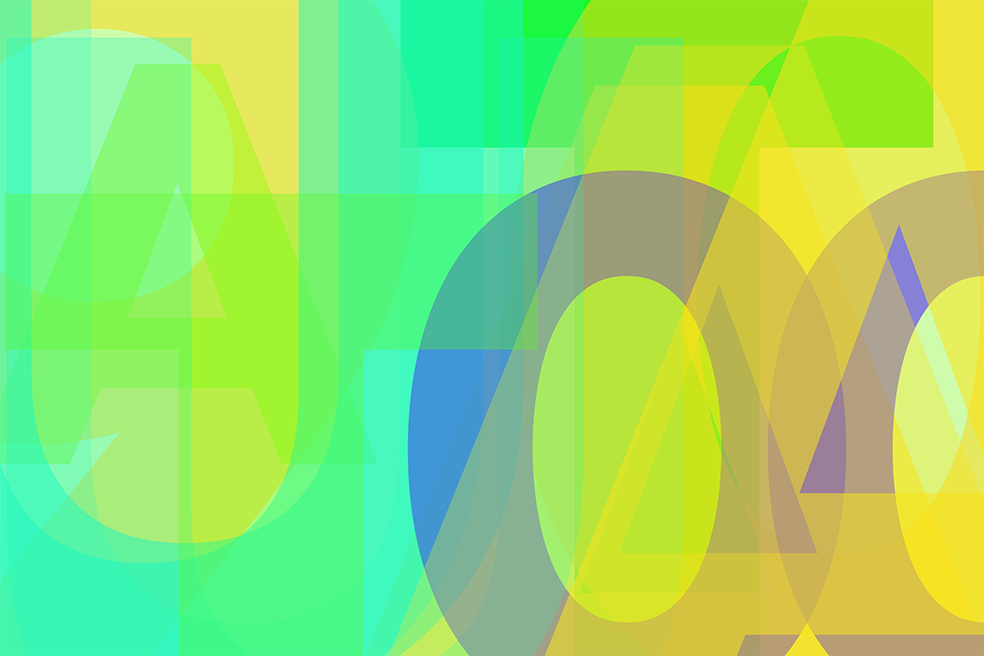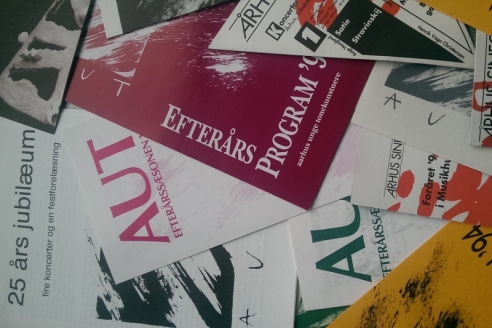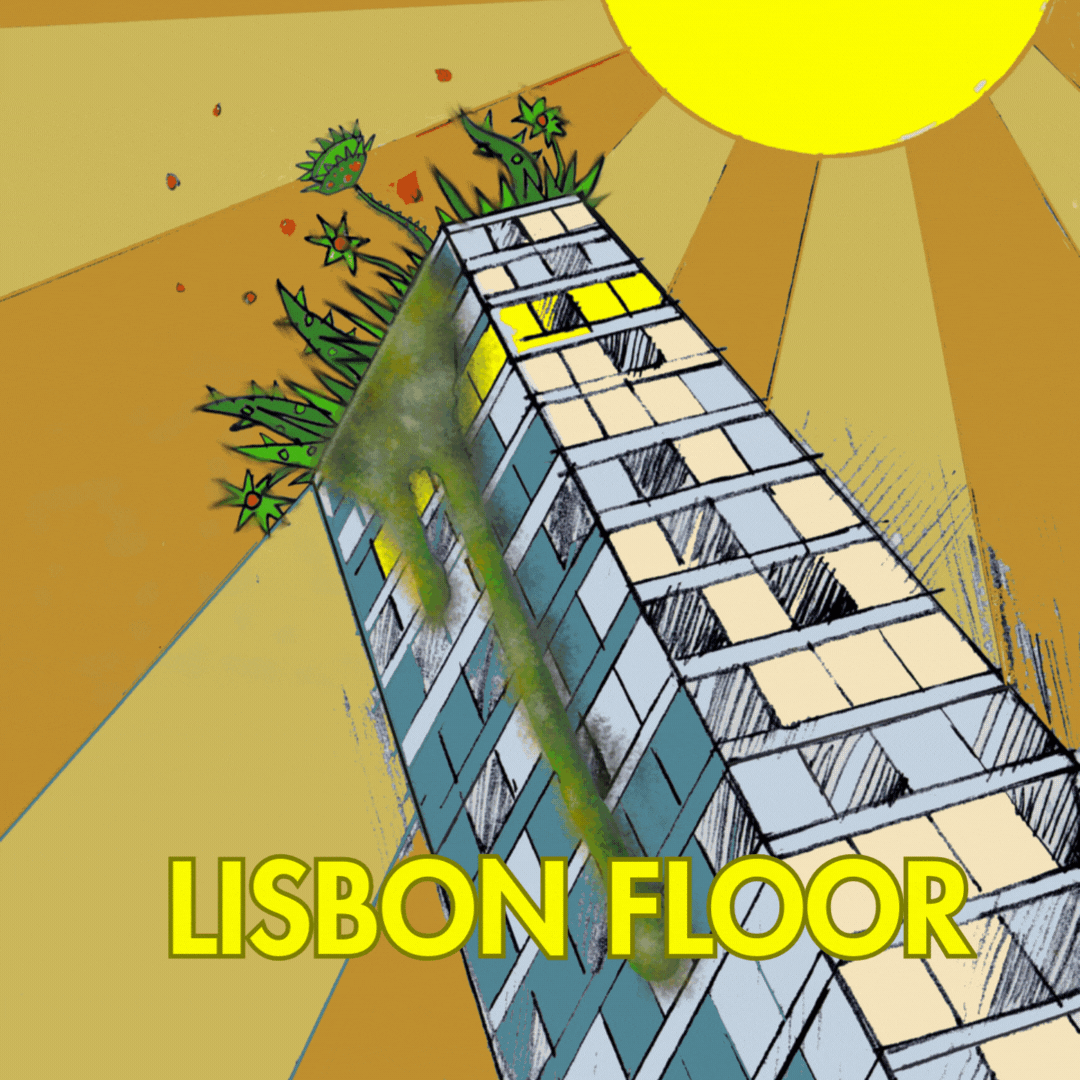
1996-2006: Ready for the future
On Monday 2 September 1991, which was my 21st birthday, I started my art history studies at Aarhus University. A desk, a mattress, my clothes and books, a stereo system and 3-400 cassette tapes of the most important music in my life back then – Bach and Boulez, Stravinskij and Stockhausen – were shoved into a rented, one-room senior citizen flat without bathing facilities. A brown room with adjoining toilet and kitchen on Jyllands Allé.
The light-grey Macintosh computer came as a revolution.
Those were the days – but why start the story here? Five years before this article’s time period? Because the technological developments that I witnessed here were crucial to what was to come. In Art History and later Musicology, where I began in 1994, you could still submit handwritten assignments. Musicology had a re-recording room where you could transfer the institute’s musical gems – from vinyl records and reel-to-reel tapes – onto cassette tapes.
The light-grey Macintosh computer came as a revolution. Together they formed a small army across the student rooms of the city and on them a diversity of independent journals and magazines were churned out: from 1991, Ildfisken – magazine for literature, published by the poet Carsten René Nielsen; also in 1991, Uden Titel – magazine for art history, with blogger Michael Hammel as its initiator, and last but not least, AUTograf, which was started in 1992 with composer Bo Gunge and students Mille Holmboe and Jakob Schmidt as its driving force.
The capital of new music
Times were eclectic and post-modern. On a Thursday I might have gone to Musikhuset and experienced Richard Wagner’s Parsifal in a production by the Danish National Opera, or listen to Århus Sinfonietta perform Arnold Schönberg’s chamber symphony, while Saturday could be spent at Æsken hearing the Nikolaj Bentzon Trio or free jazz and then end the week off on the Sunday with Ricky Lee Jones’ Pop Pop album to soothe my hangover.
Aarhus was undoubtedly new music’s Danish capital during this period and to me, the musical highlights of the 1990s were Karl Aage Rasmussen’s NUMUS festivals. This, more than anywhere, was where I satisfied my curiosity for the pioneers of new music. First and foremost, György Ligeti, Iannis Xenakis, Conlon Nancarrow and Morton Feldman.
Times were eclectic and post-modern.
This was also where I met Bo Gunge for the first time, and he asked if I wanted to become the editor of AUTograf. I did – and I soon found myself as a part of AUT. To start with, as the editor and later as administrator and producer – with Gunge himself as the chairman, and later on with the composer Lasse Laursen.
New discussion forms and forums emerged. Contributions to the printed debates in AUTograf – or to AUTograf’s older, honourable big sister, Dansk Musik Tidsskrift (DMT) – initially had a lifespan of a couple of months. A contribution from composer a – received as a handwritten letter – would have its earliest reply from composer b in the following issue, two months later. It was all typed in, set and printed and – once again by post – delivered to readers who were waiting in anticipation for the new issue and the response.
 A small pile of programme booklets from AUT concerts in the 90's. Copyright: Hjarne Fessel
A small pile of programme booklets from AUT concerts in the 90's. Copyright: Hjarne Fessel
AUTograf becomes Seismograf
In 1997, composer Karl Aage Rasmussen turned 50. On that occasion Lasse Laursen and I collected birthday greetings from a diversity of Danish composers to form a commemorative issue that was delivered along with DMT – a fact AUT considered a great victory. Per Nørgård called in and dictated his greeting by phone. Pelle Gudmundsen-Holmgreen sent his greeting by post but later called to have the wording confirmed before printing. Only so as to avoid too many errors and nonsensical stuff.
We thought that the Copenhagen scene sounded old-fashioned, like it was the 1920s.
Interviews were recorded and carefully transcribed. Later on, opinions and debates were exchanged with the editor via email and we came up with the idea to conduct interviews via email where questions and replies followed each other in a continuous exchange.
AUTograf had 4-500 subscribers in its prime – but the slow pace of the printed media felt more and more restrictive and so, as the old millennium ebbed out, AUTograf went online. By 2005-06, composers Simon Steen-Andersen, Niels Rønsholdt, Jens Voigt-Lund and others who comprised the editorial office at AUTograf came up with the idea for a new, web-based community: Seismograf. A cyber space where even the smallest changes in music could be shared instantly without a filter.
The open ears and closed doors of the golden age
As time passed, AUT had an opposing stance to the Copenhagen scene as well as Karl Aage Rasmussen’s enormous success as a festival director. We thought that the Copenhagen scene sounded old-fashioned, like it was the 1920s – and while we admired Karl Aage Rasmussen’s successes, we wished to strengthen and renew the content. AUTograf became Seismograf. NUMUS was replaced by SPOR and both the magazine and the festival acquired a more refined artistic profile in the process.
It was not only the way we received and distributed knowledge that changed in this period. The things that we sought out also changed – it was no longer just compositional music we were interested in. Together with composer Wayne Siegel and DIEM (Danish Institute for Electronic Music at the Royal Academy of Music in Aarhus), AUT organized the concert series “Biograf for øret” – concerts with electro acoustic music in a darkened cinema at Øst for Paradis. There were no fixed genres and the pioneers of compositional music were mixed with sound art, free jazz and artists like Björk, Tricky and Portishead. The CD had already replaced the vinyl record as the most important source of music, and we would go through each other’s collections with fervour in the search of something new.
“Sod off! This is a private party.”
There was a sense of community, which was paradoxical – open to everything new, yet all the while cultivating exclusivity. In a review, I summarised the attitude like this: “Sod off! This is a private party.” The private party somehow was international, though. Like for instance at a concert in 1998, when the clarinettist Harry Sparnaay made introductions in Dutch – because, as he later revealed: “This is exactly like being in Amsterdam!”
Initiatives and undertakings came and went. Simon Steen-Andersen had been cavorting with conceptuality and technological possibilities from early on. At one point AUT distributed a link to a recording of a matrix printer noisily printing a manifesto on new music. Percussionist and 2005-11 AUT chairman Henrik Larsen started AUT’s very own festival, CRUSH, which existed from 2004 until 2010. Most years, the festival took place at Musikcafeen, where works by the American artist group Bang on a Can met the hushed, poetic sounds of Axel Borup-Jørgensen.
I am tempted to call this time a golden age. We were at the forefront and AUT was a fertile environment for us to grow and mature. Århus Sinfonietta, Ensemble 2000, the saxophonists Claus Olesen and Kasper Hemmer Pihl, organist Christian Præstholm, guitarist Frederik Munk Larsen and the aforementioned percussionist Henrik Larsen provided the sounding board – almost literally – for such stars as Peter Bruun, Thomas Agerfeldt Olesen and Simon Steen-Andersen as well as the more wild-growing plants in the garden, like the composer Kasper Jarnum.

